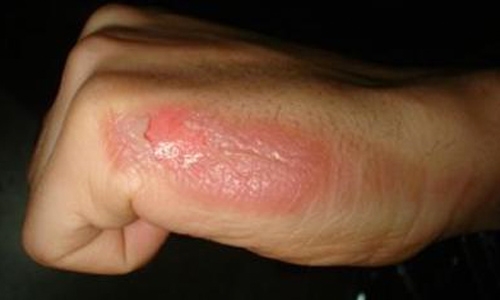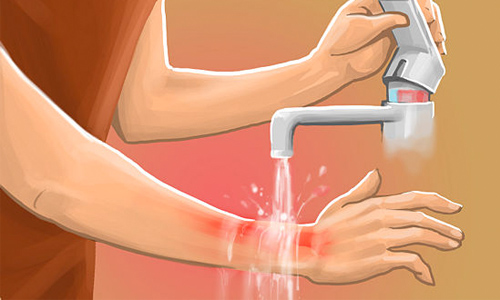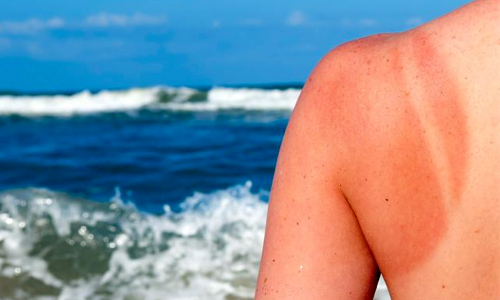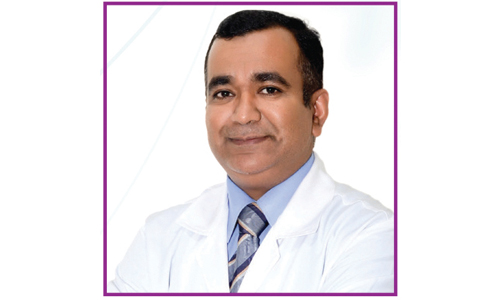Skin Burn
Due to exposure to hot water or steam, hot objects or flames, chemicals, electricity or over exposure to the sun; when the external skin tissue or the internal membranes of an individual get damaged is known as skin burn.
When to seek help?
If the burn involves the face, hands or fingers, genitals or feet
If the burn is on or near a joint (knee, shoulder, hip)
If the burn encircles a body part (arm, leg, foot, chest, finger)
If the burn is large or deep
If the victim is young (less than five years) or older than 70 years.
If there are signs of skin infection, such as increasing redness, pain, pus like discharge or temperature more than 38 degrees Celsius.
What are the types of burn?
Burns are classified according to the thickness of the skin burned and according to the requirement of surgical procedures.
Superficial skin burns
These were also known as first degree burns, involve only the top layer of skin, are painful, dry and red, and turn white when pressed. Superficial burns generally heal in three to six days without scarring. Non blistering sunburnt are a good example of a superficial skin burn.
Superficial partial-thickness skin burns
These were previously known as second degree burns, involving the top two layers of skin, are painful, red, present with fluid and turn white when pressed. These type of burns heal within seven to twenty-one days. Scar does not usually form.
Deep partial-thickness skin burns
These were previously called third degree burns, extend deeper in to skin, are painful with deep pressure, almost always form blisters and do not turn white with pressure. These burns take more than 21 days to heal and usually develop scar.
Full thickness burns
These were previously called fourth degree burns, extend through all layers of skin, completely damaging the skin. The burned area doesn’t hurt, has a leathery gray charred black colour, and the skin remain dry and does not blanch when touched. These burns cannot heal without surgical treatment and scar severely.
How to treat skin burns?
Small superficial or superficial partial thickness burns can often be treated at home. However, burns that are larger or deeper should be evaluated by a healthcare provider.
The steps
Clean the area- Remove any clothing from the burned area. If clothing is stuck to the skin, should ask for emergency medical care.
Wash the burned skin gently with cool tap water and plain soap.
Cool the area- After cleaning cold may be applied in the form of water (not ice) for a brief period of time to reduce pain and extend of burn. Ice should not be applied cause it might damage skin further.
Prevent infection- To prevent infection in partial thickness and more severe burns apply silver safaxidine cream or antibacterial cream or aloe Vera cream. Don’t open blisters on your own. That could be done by healthcare provider.
Treat pain- Elevating burned area above the heart level can help to prevent swelling and pain. Over the counter pain reliever can be used. But if pain is severe has to consult healthcare provider.
Tetanus prevention- If patient had not taken tetanus shot in the past five years and the burn is deep then a tetanus shot is needed.
Avoid scratching the skin- During healing time the burned area give rise to itching. Scratching should not be done rather moisturizing cream can be used.
When to follow-up with a healthcare provider?
If the burn is not healing, give rise to more pain or appears infected, giving rise to foul smell then the individual should seek advice and treatment from healthcare provider.
What should not be done while treating burn?
# Butter or oil should not be put on burn
# Ice or ice water should not be put directly on the burn.
# Blisters should not be broken.
How to prevent skin burn?
# keep lit candles, matches and lighters out of the reach of children.
# do not smoke when sleepy, after taking sedatives or sleeping pills.
# keep hot foods and drinks, irons and curling irons away from the edge of tables.
# Use a cool moist humidifier rather than warm steam humidifier.
# Keep children away from hot stoves and ovens. Turn pot handles inward and cook on the rear burners. Never carry a child in your arms while cooking.
# Install a smoke detector on each floor and check the battery in it once a month.
# Children’s sleepwear should be non-inflammable. Cotton sleepwear are preferable.
# Set the thermostat on your hot water heater no higher than 49 degrees Celsius.
# Prevent sunburn by applying sunscreen liberally and staying out of the sun when possible.
For more information and consultation contact Dr. Nashwer Labib, General Practitioner at MEM with 16 years of experience.
For further information, contact Middle East medical Center on 17464848.
Related Posts




